Discover the Importance of the Craft Sake Constellation in Japan
Last October, American food professionals visited fermented food producers to deepen their knowledge of Japanese fermentation culture during the “Hakko Tourism in Japan” tour campaign. As part of the tour, organizers held a tasting session where guests gave candid advice from the perspective of the American market to food product manufacturers looking to enter the United States market.
On the third weekend of August this year, an event that had locals staring in amazement and saying “I can’t believe there’s such a long queue at the ticket gate of this station…” took place in the plaza in front of Oga Station, the gateway to Oga City, Akita Prefecture, in Japan’s Tohoku region.
What you could find there were eight restaurants well-known to sake fans, and sake fans from inside and outside the prefecture, as well as seven sake breweries. The breweries were established between 2019 – 2022 in Japan and abroad: Oga’s “Ina to Agave” in Akita, Japan, WAKAZE in Paris, France, “Konohanano Brewery” in Asakusa, Tokyo, “haccoba -Craft Sake Brewery” in Minamisoma, Fukushima, “LIBROM -Craft Sake Brewery” in Fukuoka, Fukuoka, “LAGOON BREWERY” in Niigata, Niigata, “Happy Taro Brewery” in Nagahama, Shiga.
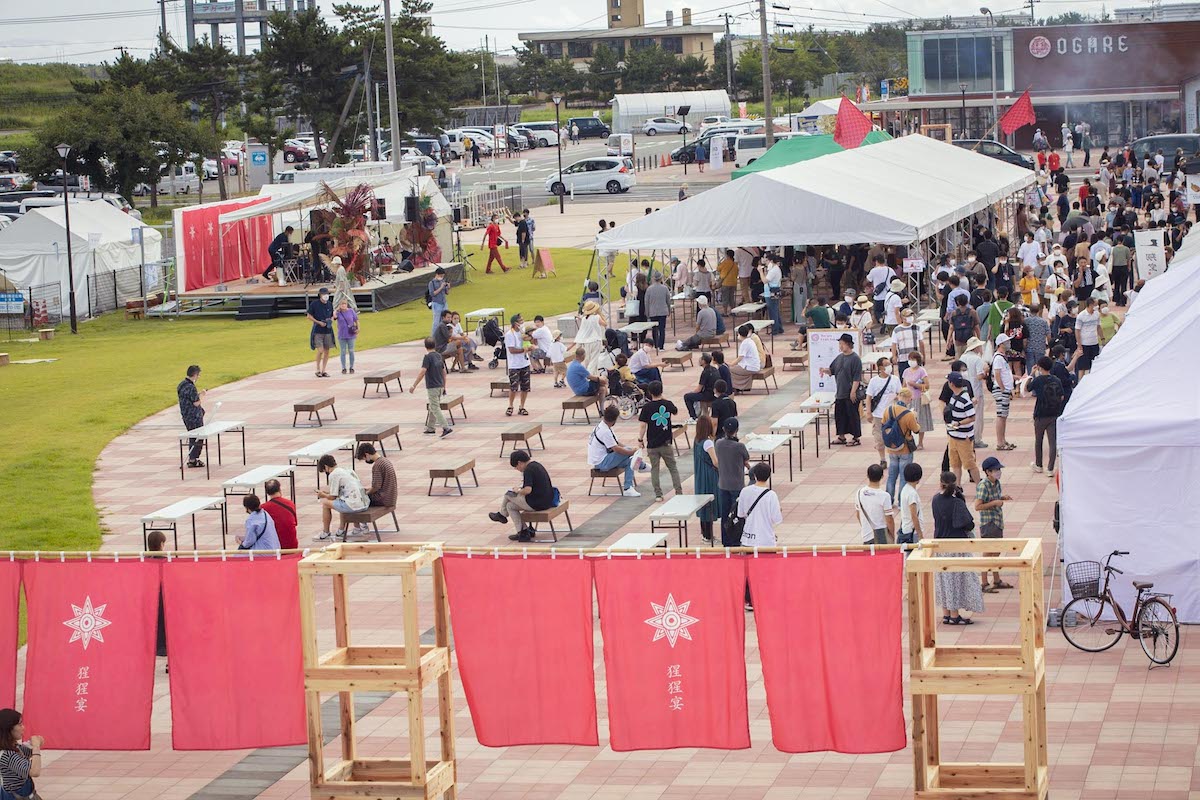
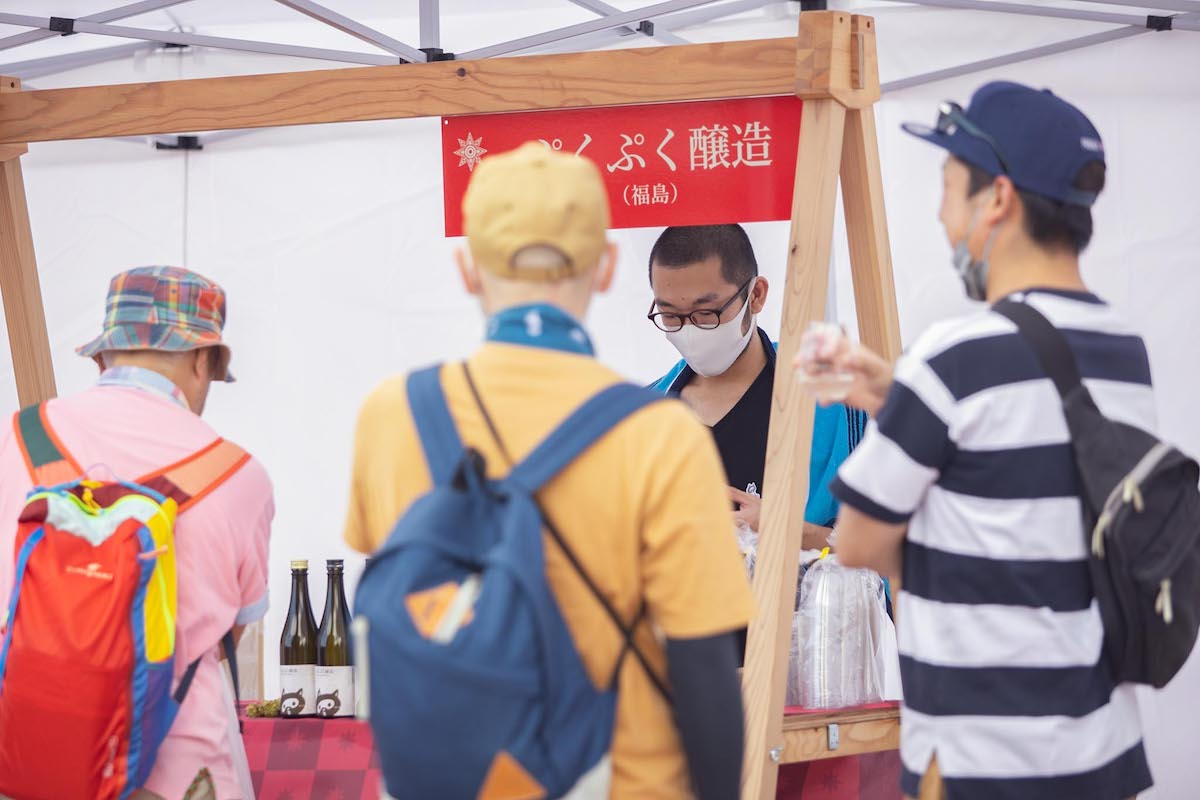
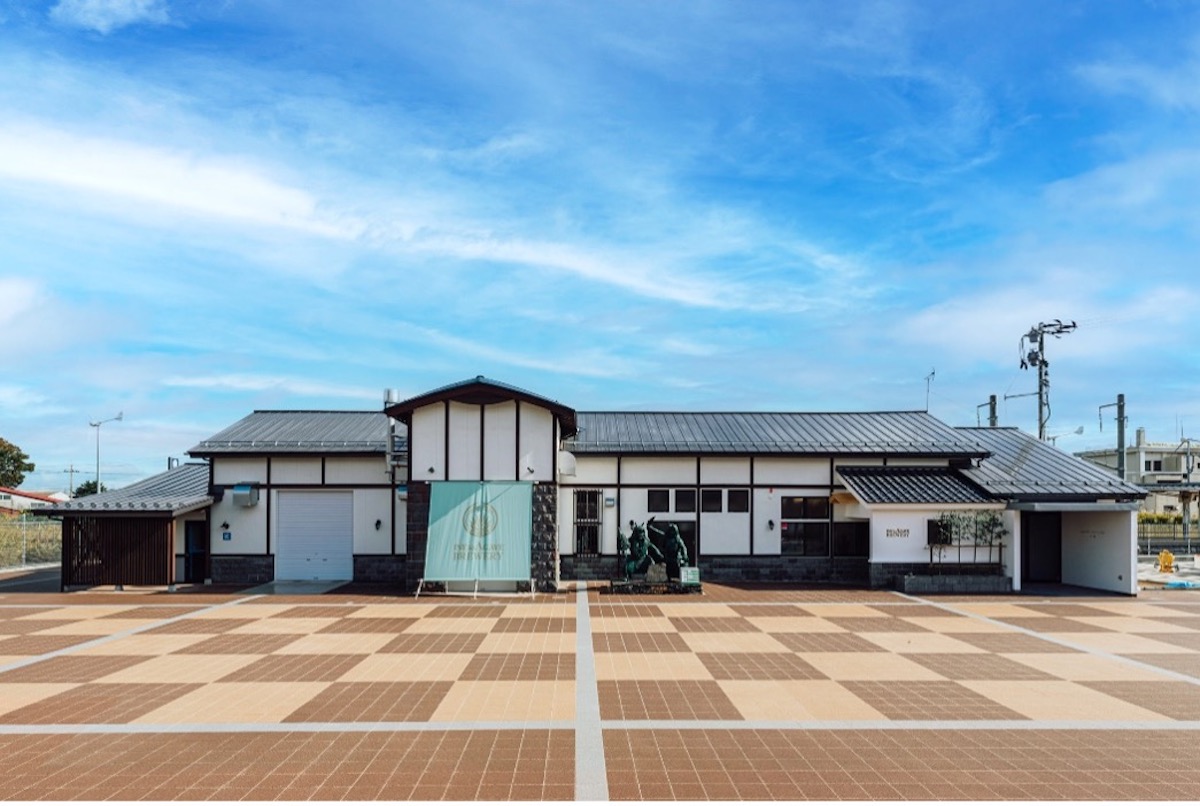
Before “Ine to Agave” was established, there was a brewery in the corner of a certain warehouse with an abandoned “Other Brew” production permit, which he brought back to life. In conjunction with the “Craft Sake Brewery Association,” he opened “WAKAZE,” an approximately 15㎡ microbrewery in Sangenjaya, Tokyo in the summer of 2018.
Okazumi and the association became the forerunners of “Craft Sake” after two Copernican Revolutions.
First off, they faced the reality that they wouldn’t be able to produce “Refined Sake” in the novel manner they envisioned. Instead of obsessing over being able to brew “Refined Sake,” they decided to obtain the production permit for “Other Brews,” where being a new market competitor was certainly realistic. This was the first turning point.
Moreover, they now held the desire to incorporate the creative inspiration they received from the craft beer and gin brewing movement abroad, in combination with the traditional Japanese sake brewing techniques, as a base. In this way, they would release over 30 types of “Botanical SAKE” made with plant-based ingredients at a rapid pace within one year.
The second turning point was when they decided that, if they weren’t granted a new permit for brewing refined sake within Japan, they would just have to leave Japan and go on to make SAKE abroad. This led them to building a brewery in Paris, France in 2019.They went on to brew and sell refined sake overseas (with WAKAZE also being sold in Japan). There certainly are examples of major sake brewers or breweries with a long history successfully being established in the past, but it was unheard of for a start-up to successfully pull off something like this. Many voices of astonishment began to rise from those involved in traditional breweries, and suddenly they became the rising star of hope for the next generation of brewers.
In order to carve out the path known as “Craft Sake,” “WAKAZE” put in the work to clear out the wilderness, pull up the weeds, till the Earth, and even pave the road to make it easier for those coming after to walk this path. (Operations at Sankenchaya are temporarily suspended in 2022. The primary brewer is now only in Paris)
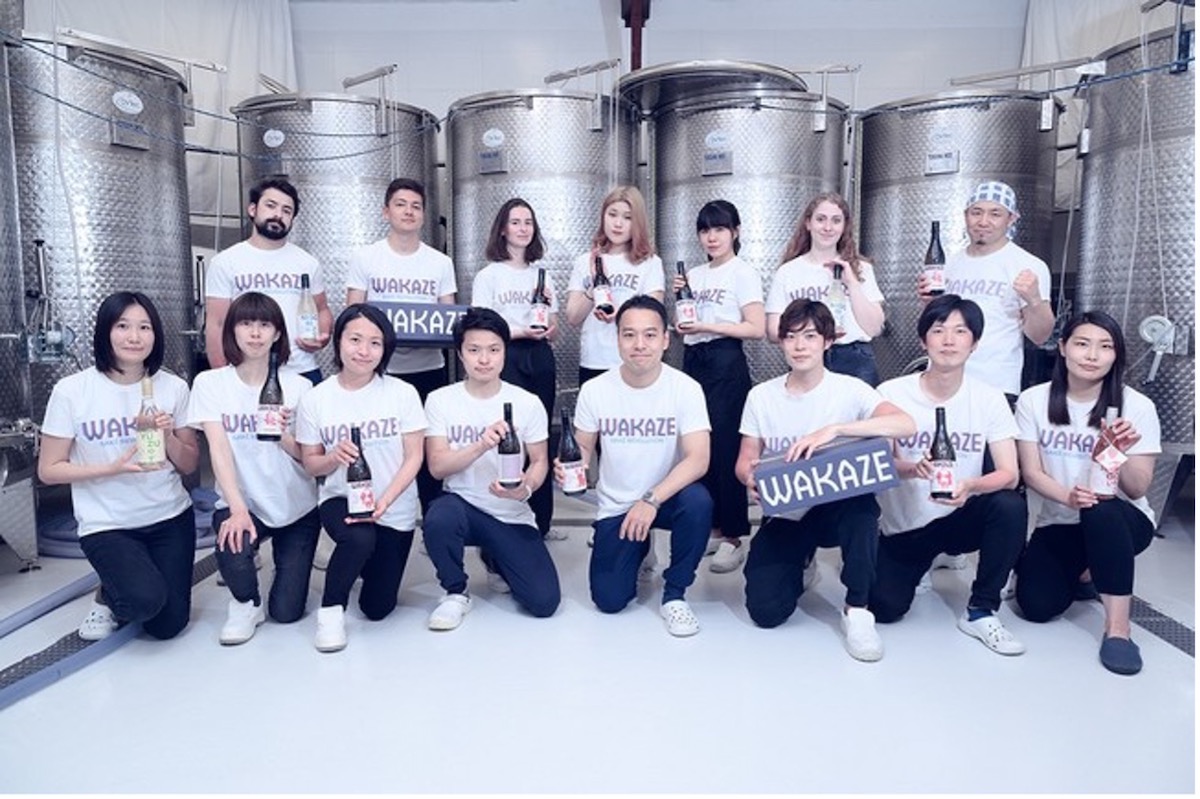

Okazumi explained, “There are two meanings included in this. First off, after gaining an understanding of the land and people of Oga, I can brew sake as if the spiritual features of Oga are directly packed into the bottles. The second is to go beyond just sake brewing, and create an exciting business from which we can give rise to new employment opportunities. I plan to open a food processing operation near the brewery in November of this year with the concept of “transforming possible food waste into treasure.” The first product will be a mayonnaise-like condiment made by up-cycling “sake lees,” which are always at a high risk of waste, instead of using egg yolks. There are several other new projects in the works as well, and I believe that ‘brewing the spiritual features of Oga’ will help enrich this region for the future.”
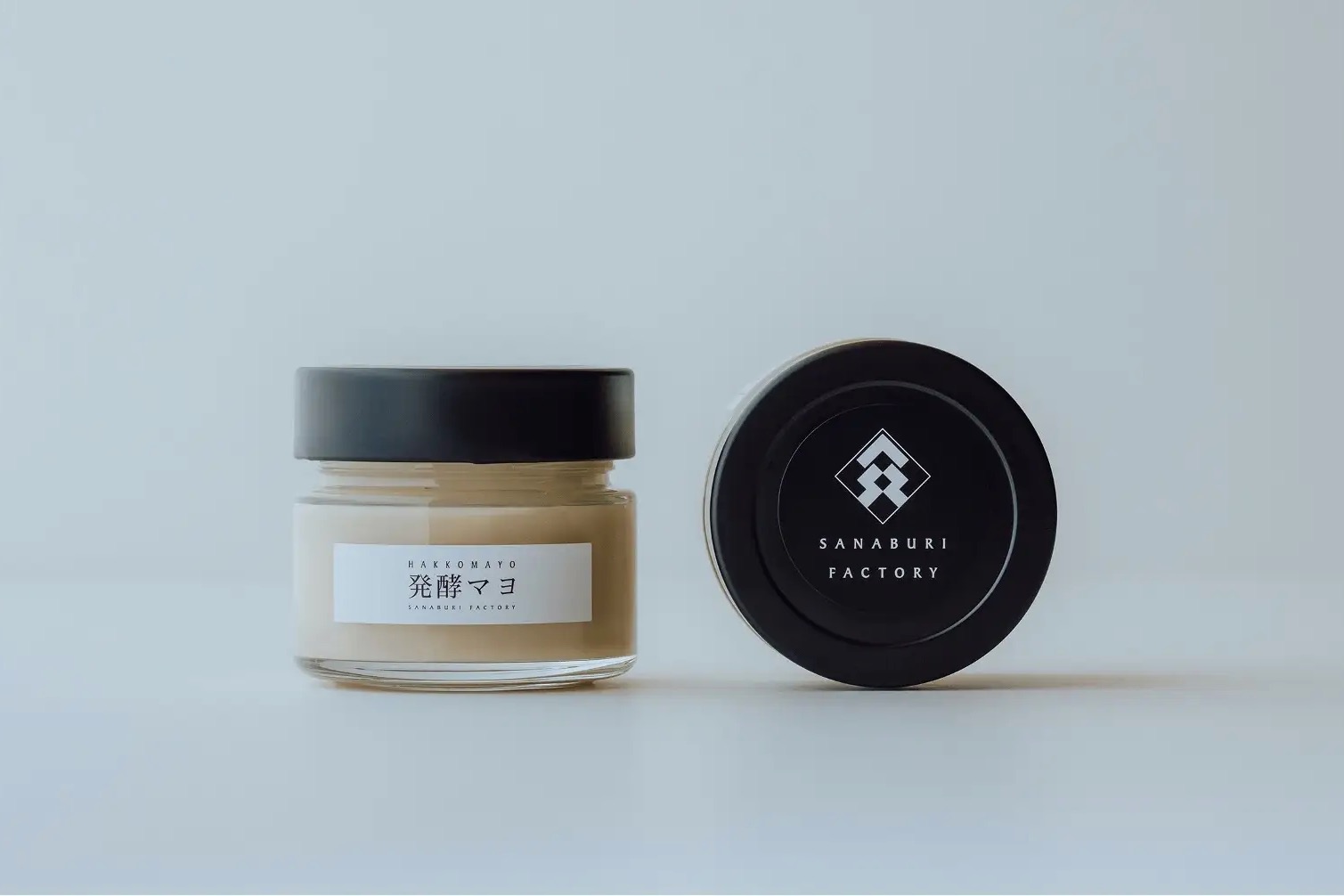

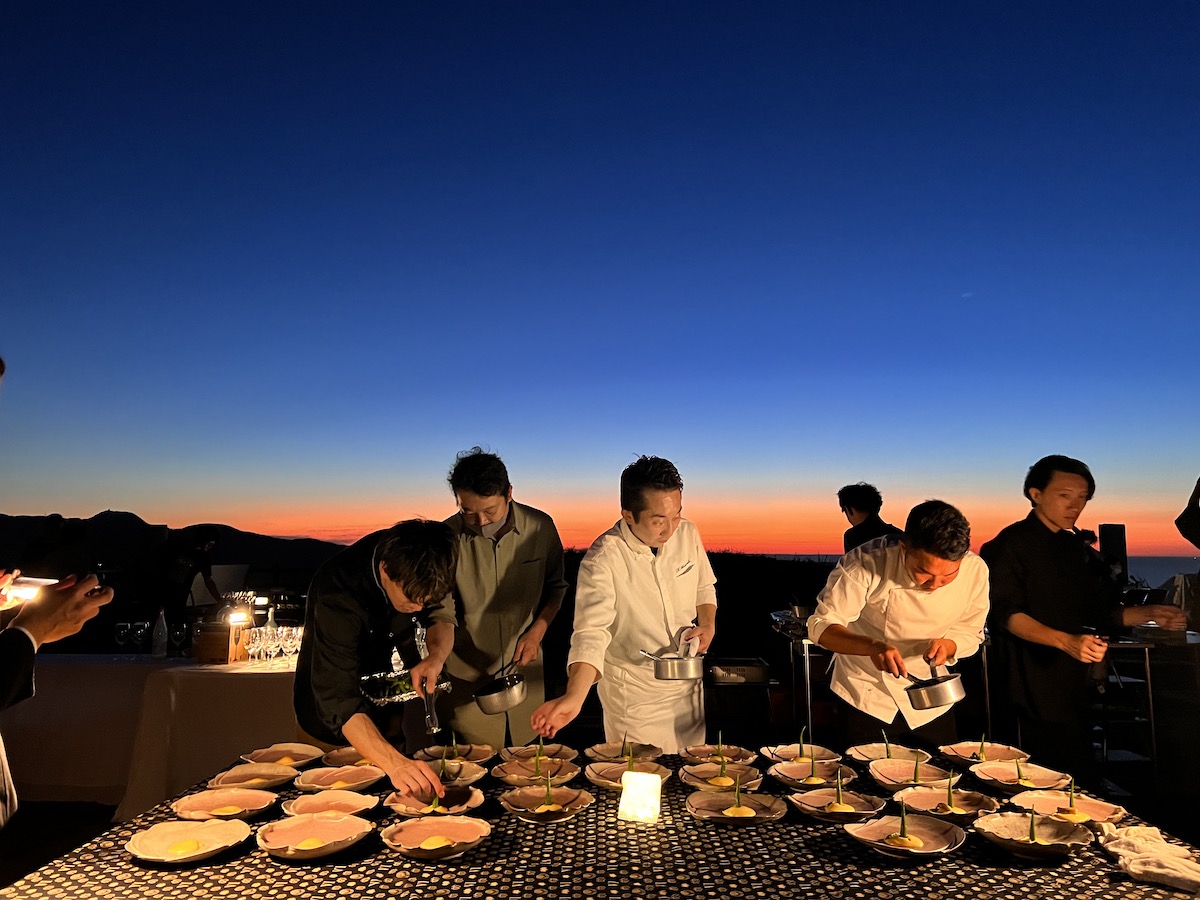
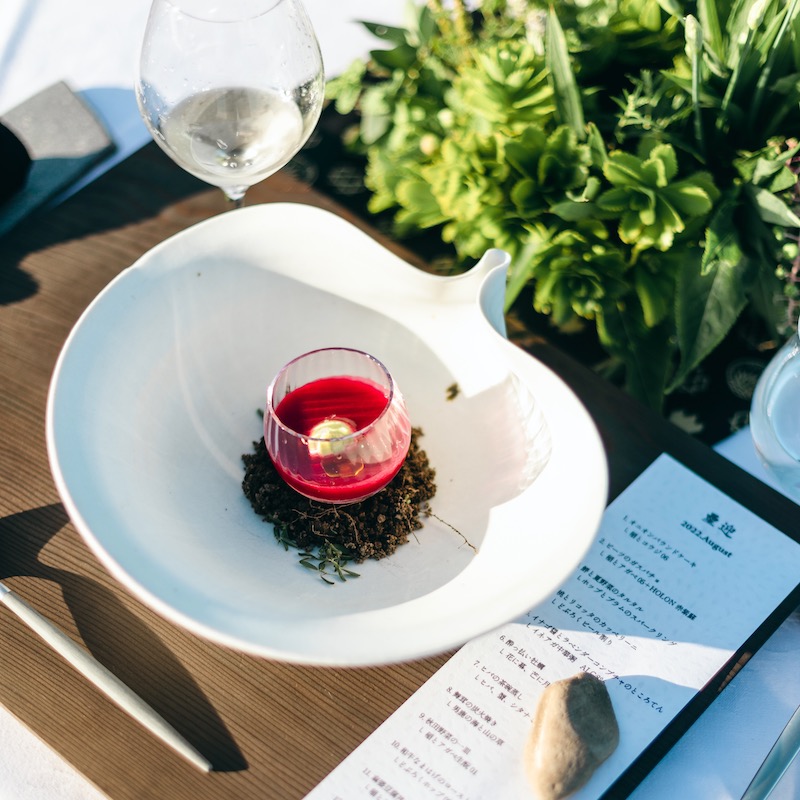
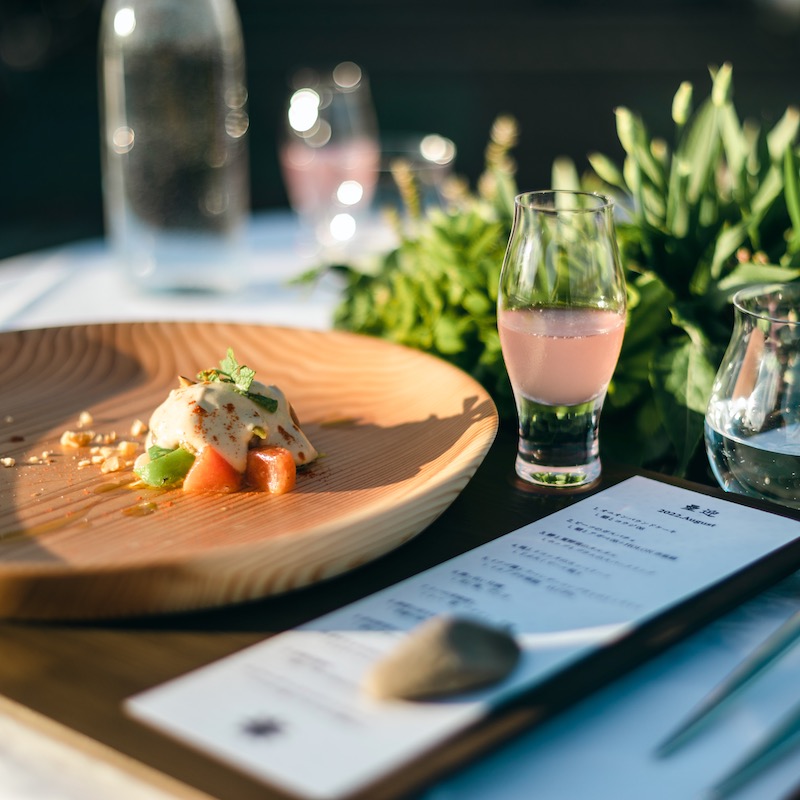
Conducting the culinary orchestra of one of a kind chefs was Goki Inoue of “TETOTETO.” He is the food creative director of the restaurant and store connected to the “Ine to Agave” brewery.
All ingredients used in the dinner course were from Akita Prefecture (with Akita’s food self-sufficiency rate being one of the highest in Japan). The dishes were served on ceramic dishware made by local potters and Kawatsura lacquerware, one of the local traditional crafts. These were crafted specifically for this event, with the “food” and “sake” serving as hubs for the local crops and handicrafts featured.
What surrounded them as they enjoyed the pairings was none other than the natural bounty’s of Oga. The sunset that sinks over the horizon of the Sea of Japan, and the Milky Way, which cannot be seen from Tokyo. This banquet, so to speak, is but a capsule collection that condenses the “spiritual features of Oga” that Okazumi has brewed through his “craft sake” over the past year.
It took just short of a year since the brewery “Ine to Agave” was established to prove that even a single brewery in a diminishing community can move people and goods on such a dynamic scale that it becomes an engine for local rejuvenation.
Once the event concluded, Okazumi said, “I have gained confidence knowing that, even in rural areas where local transit and lodging are inconvenient or minimal, with ‘passion’ it’s possible to attract others here. I want to refrain from using an over-the-top term like ‘regional development’ just yet, but I am excited about the world I see beyond the heat of the moment. There is no time to burn out as the days after the end of this event are abnormally intense. We can still do so much more, and we can go even further ahead!”
Without showing any signs of fatigue, Okazumi is making every effort to stay busy working on the next stages of development: a food processing facility opening within this year, a ramen restaurant, and the establishment of an auberge within a few years’ time.
In addition to the seven craft breweries introduced at the beginning of this article, other “Craft Sake” breweries are bound to be established through Japan hereafter. When that time comes, the “Ine to Agave” approach to brewing even the essence of the region itself, as demonstrated in from this event, will surely be referenced as the ideal role model for craft sake breweries. By bringing together craft sake breweries scattered across the country for the first time, this event has expanded the public awareness of “Craft Sake.”
The summer of 2022 in Oga will surely be etched into the history of Japanese sake as a memorable narrative, where each craft sake became a star, connecting together, to rise up as a single constellation.
For Further Reading:
Naoko Asai is a Tokyo-based editor and writer specializing in food and sake. As the former Deputy Editor-in-Chief of Ryouri Oukoku magazine, she brings a wealth of culinary expertise, impeccable attention to detail, and a passion for Japanese cuisine through her captivating storytelling.

